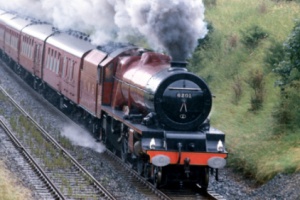 The National Transportation Safety Board (NTSB) has determined that a derailment at Paulsboro Bridge in New Jersey, which resulted in a hazardous material release occurred because Consolidated Rail Corporation rules allowed the train to proceed past a red signal onto a movable bridge without the rail slide locks being fully engaged. Investigators determined that Conrail relied on a training and qualification program that did not prepare the train crew to adequately examine the bridge lock system.
The National Transportation Safety Board (NTSB) has determined that a derailment at Paulsboro Bridge in New Jersey, which resulted in a hazardous material release occurred because Consolidated Rail Corporation rules allowed the train to proceed past a red signal onto a movable bridge without the rail slide locks being fully engaged. Investigators determined that Conrail relied on a training and qualification program that did not prepare the train crew to adequately examine the bridge lock system.
Contributing to the accident was the lack of a comprehensive safety management program. Such a program would have identified multiple bridge malfunctions, which had been increasing in frequency, and mitigated the risks associated with the continued operation of the bridge.
Inadequate inspection procedures
“The stakes are too high to leave multiple malfunctions uncorrected without a robust process that adequately mitigates the increased risk,” said Acting Chairman Christopher A. Hart. “And that starts at the top. In this case, the red signal was correct. Inadequate bridge inspection procedures – compounded by the lack of a safety management system - were the problem.”
A visual inspection failed
On Friday, November 30, 2012, at 6:52 a.m., a Conrail freight train stopped for a red signal at the Paulsboro movable bridge over the Mantua Creek in Paulsboro, NJ. The signal indicated that the bridge was not secured for the train to cross.
The train crew repeatedly sent a command to the bridge control system to close and secure the bridge, in accordance with Conrail’s procedure. The train conductor told investigators that when the signal did not change from red to green after several attempts, he visually inspected the bridge. The NTSB investigation determined the conductor incorrectly concluded that it was safe to proceed. The crew informed the train dispatcher that the bridge was safe to cross, and requested permission, which the dispatcher granted.
Conrail’s operating procedures allowed a train to proceed past a red signal protecting a moveable bridge if (1) a qualified employee visually inspected the bridge to ascertain that the running rails are aligned and locked, and (2) the train dispatcher granted permission to proceed.
Investigators found that neither Conrail nor any regulator provided any guidance regarding what constitutes a “qualified employee” for this situation, making compliance difficult to ascertain. Further, Conrail employees did not receive any formal training or written guidance on performing a movable bridge visual inspection.
While crossing the unlocked bridge, the bridge moved and seven cars derailed. Four cars fell into the creek below, including three carrying vinyl chloride and one carrying ethanol. One of the derailed tank cars was breached and released approximately 20,000 gallons of vinyl chloride.
A history of malfunctions
The NTSB’s investigation revealed that the Paulsboro bridge had malfunctioned 23 times in the year before the accident, including 11 times in the final month leading up to the derailment. Train crews had reported issues with the bridge when attempting to cross.
Hazmat ID delayed
A second focus of the report is the emergency response to the vinyl chloride release. The incident commander did not follow established protocols to protect workers and the community. The Conrail trainmaster did not immediately provide the train consist, delaying the identification of the hazardous material released. And, once the vinyl chloride was identified, the incident commander did not instruct first responders to wear protective equipment or maintain a safe distance from the accident site.
As a result of the investigation, the NTSB issued 20 safety recommendations. They include a recommendation to the Federal Railroad Administration (FRA) to issue a regulation for permitting a train to pass a red signal aspect at a moveable bridge that is similar to the regulation for crossing a broken rail. This would ensure that the bridge had been inspected by a qualified employee before a train is authorized to proceed across the bridge.
The NTSB recommendations also address several issues with emergency response, including failure to follow established hazardous materials response protocols and inadequacies of emergency planning, emergency preparedness, and public awareness for hazardous materials transported by train.
Safety management systems needed
The NTSB reiterated a recommendation to the FRA to require railroads to adopt safety management systems.
A synopsis of the NTSB report, including the probable cause, findings, and a complete list of the safety recommendations, is available at http://www.ntsb.gov/news/events/2014/paulsboro_nj/abstract.html. The full report will be available in several weeks.


